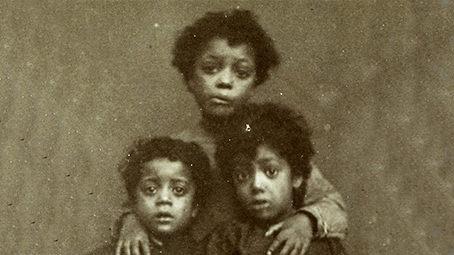
Elizabeth and her two younger siblings Sarah and John grew up in Liverpool.
Their father John Snr who was only described as a “coloured man”, left the family when he was offered a job as a cook on a ship called the Glengarry. He never returned, leaving their mother to raise three children on her own.
After struggling to make ends meet by selling all the family’s belongings and washing and cleaning to earn a little money, their mother was forced to move herself and the children into St George’s Workhouse in London. Despite their mother’s struggles to support her children, all three siblings regularly attended school. After a few months in the Workhouse however, the family was left homeless and their mother reached out to Barnardo’s for help.
On 12 January 1882 all three siblings were admitted to Barnardo’s. Elizabeth was nine, Sarah eight and Jon was only six years old.
In the siblings’ admissions papers, Elizabeth was described as a “remarkably intelligent child” who could read fluently and was “eager to learn”.
In 1887 Elizabeth left Barnardo’s care when she was given a job in domestic service.
Younger sister Sarah had spent some time in a children’s hospital before she came to Barnardo’s. In her admission report she was described as a “delicate looking child”. To help Sarah recover, she was sent to Halifax Cottage by the seaside. Barnardo’s believed children with health issues had a better chance of recovery at the seaside with fresh air, than in polluted Victorian London.
Sadly, Sarah died shortly after she came back to the Girls Village in 1884, at the age of ten. She was buried at the Holy Trinity Church next to the Girls Village and her name is part of the memorial at the Barkingside cemetery.
John, the youngest of the three siblings, was admitted to the Boys Village in Stepney before he was sent to Canada in 1892 aged 16 as part of the child migration scheme.
